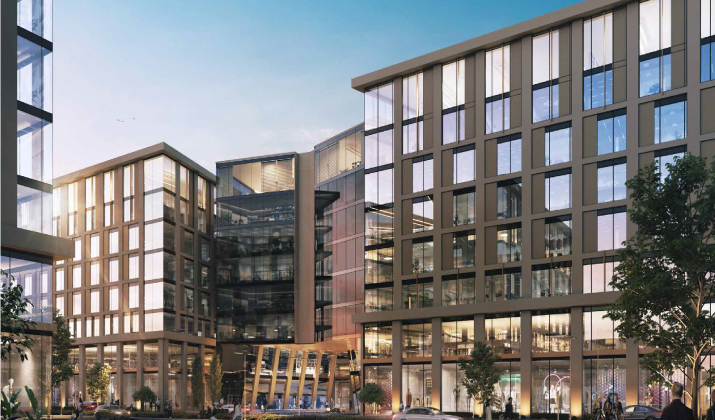In the dynamic real estate landscape of the Arab world, commercial development has become a core pillar of urban expansion, job creation, and economic diversification. From state-of-the-art business districts in the UAE to smart logistics hubs in Saudi Arabia and mixed-use centers in Egypt, developers are reshaping the skylines and economic fortunes of entire regions. However, one question remains fundamental to every successful development: how do you identify the right property?
In a region where verified information, clear titles, and accurate zoning data are critical, Multiple Listing Services (MLS) have emerged as transformative tools for investors and developers. Platforms like DubaiMLS, ArabMLS, and The Official Egyptian Real Estate Platform are leading this transformation by making property identification more transparent, efficient, and data-driven.
This article provides a deep dive into how MLS platforms can be effectively used to identify high-potential properties for commercial development across the Arab region, offering insights, practical steps, and real-world examples.
Understanding the Role of Commercial Development
Commercial real estate refers to properties developed for business purposes. This includes retail centers, office towers, industrial warehouses, logistics hubs, and hospitality venues such as hotels or serviced apartments. Unlike residential real estate, commercial development often requires more intensive planning, higher capital investment, and detailed analysis of zoning, infrastructure, and economic demand.
In many Arab countries, governments are actively encouraging commercial development to reduce reliance on oil, increase foreign direct investment (FDI), and stimulate job creation. This makes the sector especially attractive for investors and developers who can identify the right plots and execute projects efficiently.
However, the process of locating suitable land or properties remains one of the most time-consuming and risky phases. Developers must navigate regulatory complexities, incomplete data, and fragmented local markets.
This is where MLS platforms come into play.
What Is an MLS and Why Does It Matter?
A Multiple Listing Service (MLS) is a centralized digital database that aggregates real estate listings, providing access to verified, standardized, and up-to-date information. Originally designed to help brokers share property listings, MLS platforms have evolved to serve broader audiences—including investors, developers, legal professionals, and government agencies.
What distinguishes MLS platforms from traditional property portals is their depth and reliability. An MLS doesn’t just show a price and a photo—it offers detailed parcel data, ownership records, zoning classifications, transaction history, infrastructure status, and often integration with public and governmental sources.
In the Arab region, several MLS systems have been launched or expanded with a focus on improving transparency and efficiency:
- DubaiMLS, developed in collaboration with the Dubai Land Department (DLD), offers a structured view of all types of real estate transactions in Dubai, including land plots available for commercial projects.
- ArabMLS, a multi-country platform, aggregates listings and public data across several MENA countries. It aims to provide consistency, comparability, and professional tools across borders.
- The Official Egyptian Real Estate Platform, backed by the Egyptian government, connects developers to a wide range of public and private listings with legal, title, and zoning documentation.
These platforms allow developers to quickly analyze and shortlist opportunities that align with their business goals.
The Benefits of Using MLS for Commercial Development
Identifying the right site for commercial development involves evaluating a variety of factors—legal clarity, access to infrastructure, land use designation, market trends, and competitive positioning. MLS platforms bring all of these elements together in one interface.
First and foremost, they provide access to zoning and land use information. This is essential when evaluating whether a plot is legally designated for commercial, industrial, or mixed-use projects. For instance, using DubaiMLS, a developer can instantly confirm whether a land parcel in Business Bay is zoned for office construction.
Another key advantage is ownership verification. Clear title is one of the top legal hurdles in many real estate markets. By accessing an MLS platform, developers can confirm the current owner of a plot and whether any liens, disputes, or encumbrances exist.
Equally important is price transparency. MLS data includes recent sales transactions, market comparables, and pricing trends—empowering investors to make competitive yet informed offers. Platforms like ArabMLS go a step further by integrating pricing data across borders, helping regional developers assess relative land costs in different cities.

Lastly, MLS systems often include parcel-level mapping tools, interactive filters, and satellite imagery. This helps developers visualize not just the property itself, but the surrounding infrastructure—roads, utilities, public transit, and neighboring land uses—which can make or break a commercial project.
How Developers Use MLS: A Strategic Workflow
To effectively use MLS platforms for commercial development, developers typically follow a strategic process that combines technical research with financial planning and legal due diligence.
Step 1: Define Your Investment Objectives
Before beginning a search, developers must clearly define what type of commercial project they aim to pursue. Is the goal to build a logistics warehouse? A business hotel? A regional retail hub? Each type of project has different requirements in terms of location, parcel size, traffic flow, and regulatory approvals.
For example, a company seeking to develop a last-mile logistics center will focus on proximity to transportation corridors and high-density residential areas. In contrast, a hotel developer may prioritize tourist zones, coastal access, or heritage districts.
Step 2: Search MLS by Location and Zoning
With objectives in mind, developers log into platforms like ArabMLS or The Official Egyptian Real Estate Platform. They use filters to narrow down parcels that meet their criteria. These may include city, district, land size, zoning type, and price range.
In DubaiMLS, for example, a user can search only for commercial-zoned plots within a 10-kilometer radius of the airport, filter by minimum parcel size, and see which sites are government-owned versus privately held.
This step eliminates hundreds of unqualified options and quickly highlights viable candidates.
Step 3: Analyze Comparable Listings and Market Data
Once suitable parcels are shortlisted, developers compare them based on historical sales data, price-per-square-meter benchmarks, and any upcoming projects in the vicinity.
Let’s say a developer finds a commercial lot in New Cairo listed on The Official Egyptian Real Estate Platform. Before making a decision, they would review nearby listings, examine past transaction prices, and investigate whether major government infrastructure—such as a new metro station or government complex—is planned nearby.
MLS platforms often include this type of forward-looking data, either through official government feeds or integration with planning databases.
Step 4: Review Ownership and Legal Status
After narrowing the options, developers proceed to verify title and ownership information. This includes checking for legal disputes, outstanding debts, or multiple claimants.
On government-linked platforms like DubaiMLS or Egypt’s official platform, this information is synchronized with land registries, offering reliable documentation.
This legal transparency is one of the most valuable aspects of using MLS in the Arab world, where title disputes have historically slowed down or derailed commercial projects.
Step 5: Conduct Technical and Site Reviews
Even after data-based analysis, physical site visits are essential. Developers use MLS tools like satellite views, topographic maps, and infrastructure overlays to conduct virtual inspections. Once a shortlist is created, engineers and planners visit the site for ground verification.
A Regional Example: Identifying an Industrial Plot in Dubai South
Consider a mid-sized logistics company based in Riyadh looking to expand operations into the UAE. The company’s strategy is to build a warehouse and distribution center near Dubai’s logistics corridor.
Using DubaiMLS, the developer searches for industrial-zoned land within a 15-minute drive of Al Maktoum International Airport. The platform displays verified land parcels, each with zoning tags, size, price, and ownership records.
The company finds a 20,000 sqm parcel listed by a government agency, with a clean title and full infrastructure access. Past transaction data confirms that similar parcels have appreciated by 12% annually in the past five years.
Thanks to MLS, the company skips weeks of manual research and completes the property assessment in under a week.
Growth Opportunities Across the Arab Region
The increasing digitization of property data is creating new development opportunities across the Arab world.
In Egypt, platforms like The Official Egyptian Real Estate Platform now showcase land for tourism and retail development in coastal cities like Hurghada and Marsa Alam. Developers can also track government auctions in New Alamein, the New Administrative Capital, and other smart city projects.
In Saudi Arabia, ArabMLS offers access to early-phase listings in mega-projects like NEOM, Qiddiya, and The Red Sea Project. These areas have been zoned for everything from cultural tourism to commercial hubs, and MLS systems offer transparency that was difficult to obtain in the past.
In the UAE, developers can use DubaiMLS to identify plots in emerging areas such as Dubai South, Jumeirah Village Circle, and Dubai Silicon Oasis—all of which are transforming commercial and mixed-use districts.
Challenges and Limitations
Despite their benefits, MLS systems are not without challenges.
Some countries in the region still lack fully integrated MLS platforms, relying instead on fragmented broker networks or outdated land registries. In such cases, developers must supplement MLS research with manual investigations.
In other markets, data quality may vary depending on whether the platform is privately or publicly run. Government-backed MLS platforms typically offer more reliable ownership and zoning data.
Lastly, while MLS tools provide critical information, they are not substitutes for on-the-ground inspections, environmental impact studies, or local authority approvals.
Final Thoughts
In an age where data drives decisions, MLS platforms are becoming indispensable tools for commercial real estate development in the Arab world. They offer unmatched access to verified property data, reduce due diligence time, and help developers make informed decisions with confidence.
Whether you are building an office complex in Dubai, a retail center in Alexandria, or a logistics hub in Riyadh, platforms like DubaiMLS, ArabMLS, and The Official Egyptian Real Estate Platform provide the clarity and credibility needed for successful development.
By embracing MLS technology, investors and developers position themselves at the forefront of a smarter, more transparent real estate future in the Arab region.










